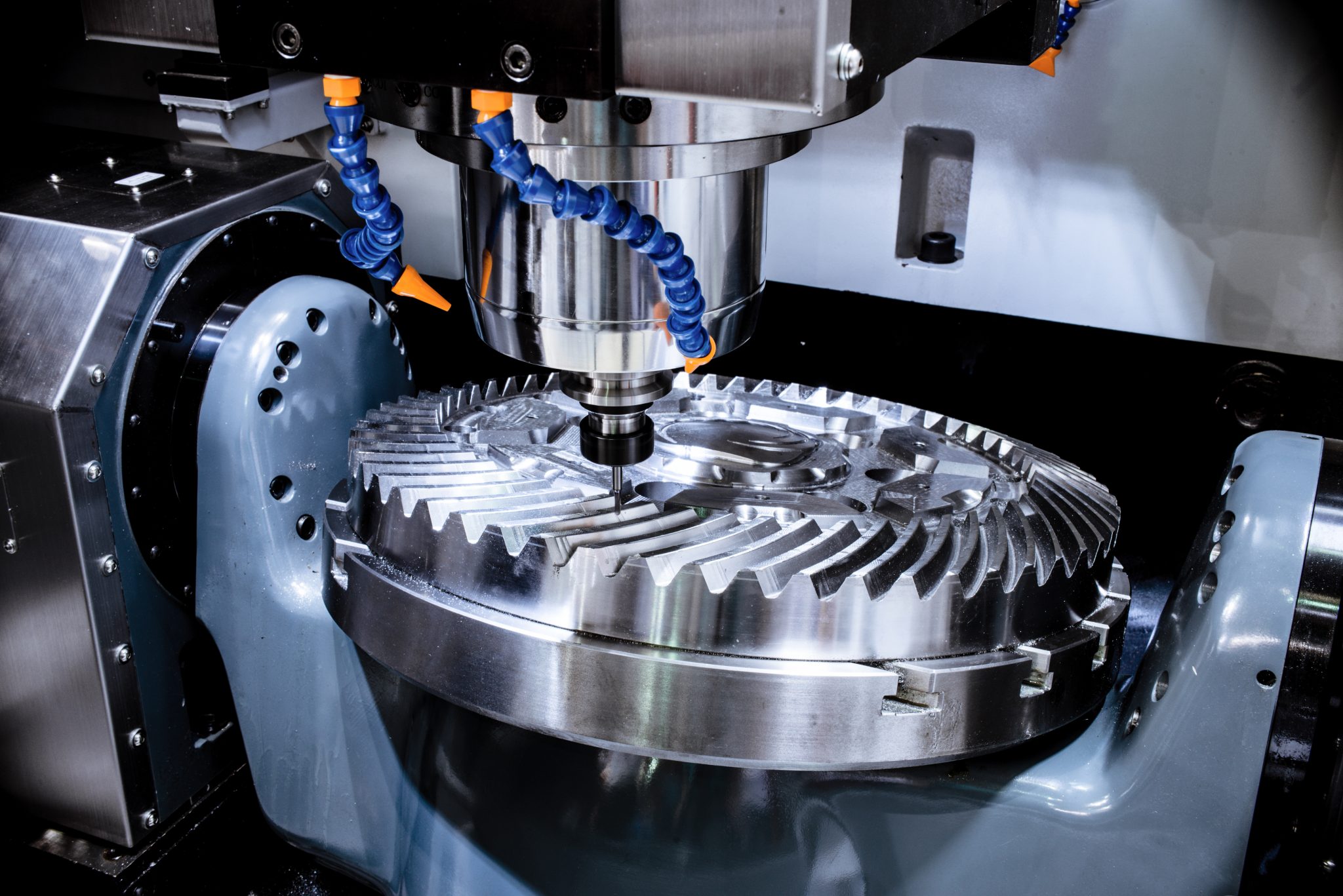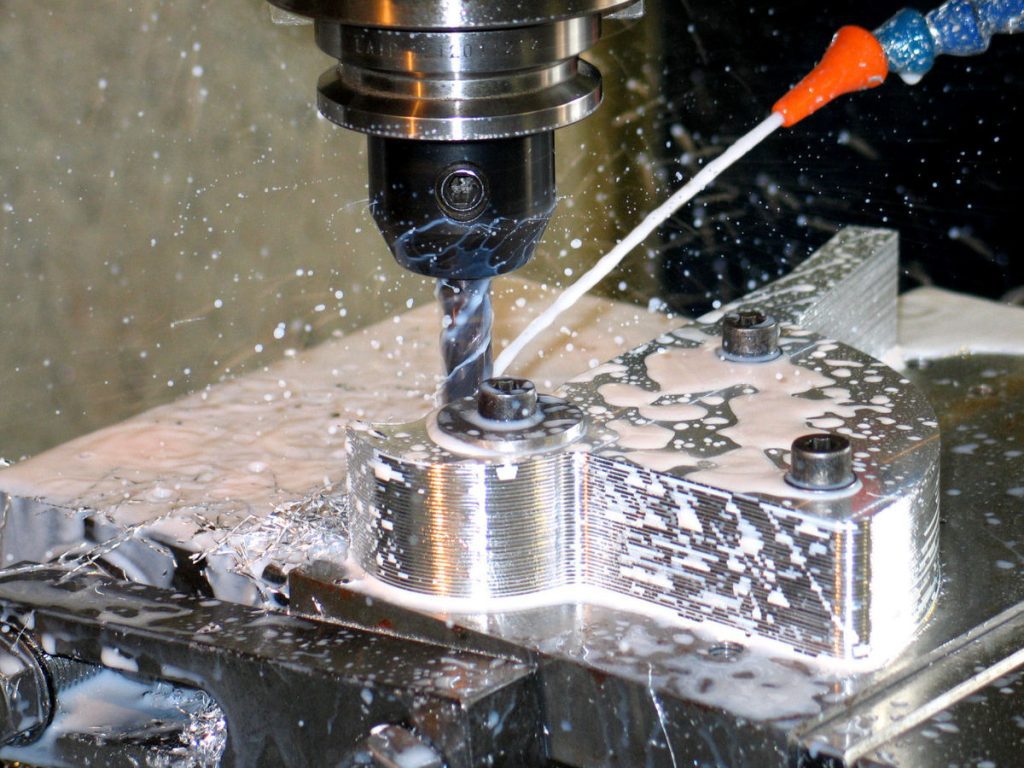Unveiling the Details of Fasteners and Machining Processes for Optimum Performance
In the realm of design and manufacturing, the choice of fasteners and the details of machining procedures play a critical role in figuring out the best efficiency and durability of an item. From the seemingly uncomplicated task of picking the best kind of fastener to the facility precision machining strategies employed, every action in this process needs meticulous interest to information. As we start this expedition into the globe of fasteners and machining, we will certainly uncover the refined yet crucial factors that can dramatically impact the performance and quality of the end product, dropping light on the often ignored facets that can make all the difference in attaining optimum performance.

Value of Appropriate Fastener Choice
Choosing the proper bolts is vital in making sure the architectural stability and longevity of any mechanical setting up. Bolts play a basic duty in holding elements together firmly, with the ideal choice adding substantially to the total performance and reliability of the setting up. When picking fasteners, variables such as material compatibility, environmental problems, load-bearing capacity, and convenience of setup must be meticulously thought about to assure ideal efficiency.
Incorrect bolt selection can bring about a variety of concerns, including helping to loosen, corrosion, and also structural failure. Making use of fasteners that are not matched to the particular needs of the assembly can endanger its functionality and present safety dangers. Designers and designers must thoroughly evaluate the application needs and pick bolts that satisfy or go beyond the necessary standards and specs.
Moreover, the proper fastener selection process includes assessing the joint design, anticipated tons, resonance degrees, and prospective thermal development or tightening to make certain that the chosen fasteners can endure the operating conditions successfully. By focusing on correct bolt option, suppliers can boost the quality, sturdiness, and performance of their mechanical assemblies.
Types and Qualities of Fasteners
A crucial facet of mechanical settings up hinges on recognizing the varied kinds and special attributes of fasteners used in different industrial applications. Fasteners are essential components that hold structures together, making certain security and performance. There is a large range of fasteners available, each made for details functions based on the application requirements. Usual kinds of fasteners include screws, bolts, nuts, pins, rivets, and washers.
Screws are threaded bolts that are commonly utilized to sign up with two or even more parts together. Nuts are inside threaded bolts that mate with bolts to hold elements together. Washing machines are thin plates that distribute the tons of a bolt, preventing damage to the product being attached.
Recognizing the features of each sort of bolt is necessary for choosing the best one for a specific application, guaranteeing optimal efficiency and dependability of the mechanical assembly. Fasteners and Machining.
Accuracy Machining Strategies for Effectiveness
The elaborate design needs of various bolts necessitate utilizing precision machining methods for optimum effectiveness in making processes. One of the key techniques made use of in precision machining is Computer system Numerical Control (CNC) machining, which enables high levels of precision and repeatability in the production of bolts.
In enhancement to CNC machining, other accuracy techniques such as grinding, milling, and turning are generally used to accomplish the limited tolerances needed for bolts. These techniques enable suppliers to create bolts with smooth surface areas, accurate measurements, and high architectural integrity. By using accuracy machining strategies, manufacturers can improve the top quality of bolts, decrease product waste, and boost overall production effectiveness. Furthermore, using innovative machining processes aids make certain that fasteners meet market requirements and consumer assumptions for find more information efficiency and reliability.

Variables Influencing Machining Refine Performance
Numerous variables play a considerable role in establishing the performance of machining procedures in the manufacturing of bolts. The first important element is the selection of cutting tools. Picking the appropriate devices based upon the product being machined, desired surface, and reducing rates can considerably influence the efficiency and top quality of the machining procedure. Furthermore, the reducing specifications such as cutting speed, feed price, and deepness of cut are essential variables that influence performance. Fasteners and Machining. Maximizing these parameters based on the specific needs of the fastener being produced is essential to attaining cost-effective and exact machining.
Machine strength and security also play a crucial role in establishing machining procedure efficiency. A steady machine with marginal vibrations can improve precision and stop tool wear, resulting in better total efficiency. The skill and experience of the maker operator can not be ignored. A well-informed operator can make real-time modifications, troubleshoot issues effectively, and make certain that the machining procedure runs efficiently, eventually affecting the final top quality of the fastener.

Quality Assurance Measures in Manufacturing
Elements influencing machining process performance, such as cutting tool option and equipment security, straight effect the application of high quality control steps in manufacturing. Quality control actions are essential in ensuring that items fulfill the needed standards and requirements. In the production process, various techniques are used to keep high quality requirements. Evaluation and screening play a critical function in determining any deviations from the wanted end result. Regular maintenance of machining tools is likewise vital to promote top quality control. Calibration of devices and devices is needed to make sure accurate and precise production processes. Additionally, applying standard operating procedures and procedures can assist in preserving uniformity and high quality throughout the assembly line. Quality control measures not only concentrate on the end item but likewise on every stage of the manufacturing procedure to avoid mistakes and problems. By sticking to stringent top quality control steps, suppliers can improve customer best site satisfaction, develop a reputation for important link dependability, and ultimately attain ideal efficiency in their machining processes.
Conclusion
To conclude, choosing the best fasteners and using precision machining methods are crucial for optimum efficiency in making procedures. Recognizing the kinds and features of bolts, together with aspects affecting machining procedure performance, can lead to improved efficiency and quality control measures. By focusing on these intricacies, manufacturers can attain greater levels of performance and reliability in their items.
In the world of engineering and manufacturing, the option of bolts and the ins and outs of machining processes play a pivotal duty in figuring out the utmost performance and resilience of a product (Fasteners and Machining). One of the key methods used in accuracy machining is Computer Numerical Control (CNC) machining, which enables high degrees of precision and repeatability in the production of bolts. The use of innovative machining procedures helps make certain that fasteners meet sector requirements and customer assumptions for performance and integrity
In final thought, selecting the ideal fasteners and making use of precision machining techniques are necessary for ideal performance in making processes. Recognizing the types and features of fasteners, along with variables affecting machining procedure performance, can lead to improved effectiveness and quality control actions.